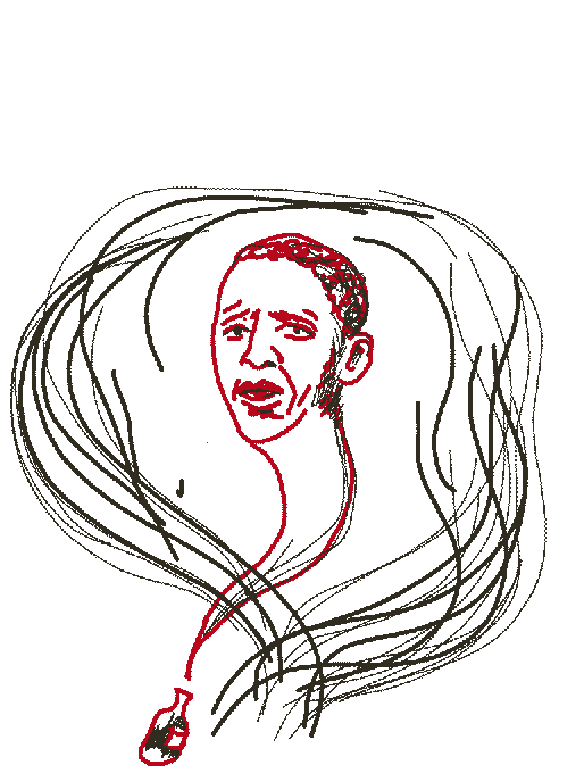Editor’s Note: Nicole Hemmer is an associate research scholar at Columbia University with the Obama Presidency Oral History Project and the author of “Messengers of the Right: Conservative Media and the Transformation of American Politics.” She co-hosts the history podcasts “Past Present” and “This Day in Esoteric Political History” and is co-producer of the podcast “Welcome To Your Fantasy.” The views expressed in this commentary are those of the author. View more opinion on CNN.
This fall was supposed to be different. With the new Covid-19 vaccines, the country began to reopen during the summer and vaccine approval for teens (with the hopeful prospect of approval for younger children) promised a return to schools and a return to the pre-pandemic rhythms of life.
But then came the Delta variant, and the vaccine resisters, and the state efforts to ban mask and vaccine mandates – and suddenly what once felt like the beginning of the end revealed itself to be a momentary pause.

The near-total breakdown of hope for a return to normal has also highlighted and fueled a wave of misinformation about the pandemic and the vaccines designed to end it. From groundless conspiracy theories that the vaccines contain microchips or alter people’s DNA to deliberate falsehoods about vaccine deaths and mask side effects, the pandemic misinformation industry is thriving in the US, more than a year and a half after the pandemic began.
Two features of modern American life seem most to blame for the angry distrust and intractable division that surround us: the dissemination machine of social media and the rejection of fact-based sources of information by many on the right, particularly among politicians and media.
We are living in a dangerously unprecedented moment.
The poisoned public square
Still, it’s important to understand that while the mechanisms for dispersing information have evolved, medical misinformation – the deliberate spread of demonstrably untrue claims for politics or profit – has been a feature of life in the US throughout the nation’s history. From patent medicine to fluoride conspiracies to false claims about the health effects of tobacco, misinformation has long crowded public debate.
That this is not novel does not mean we should be less alarmed.
Medical misinformation has caused death and incalculable human misery over the past century and a half. Today, it is thwarting efforts to end the catastrophic phase of the Covid-19 pandemic, as overflowing intensive-care units have some hospital systems on the brink of collapse, nine months after the first Covid vaccine was administered and half a year since it has become widely available across the country.
The history of medical misinformation offers critical lessons from the past about regulation, media and the political and financial interests that drive such mendacity. They point to the effectiveness of regulating medical misinformation and the need for trustworthy institutions. But they also show the need to move past calls to “believe science” and on to a culture of humility and transparency when it comes to scientific knowledge about medicine and public health.
Medicine shows: a traveling carnival of 19th-century misinformation
Kickapoo Indian Sagwa could do it all: heal the blood, the liver, the stomach and even the kidneys. Purportedly based on a proprietary blend of ingredients developed by Indigenous healers – and patented by White salesmen – sagwa was sold in the late 19th century as a panacea: you drank it to cure whatever ailed you. And to make it even more appealing (and profitable), it was sold not only through wordy advertisements in newspapers and almanacs but in traveling spectacles featuring performances by Native actors.
The Kickapoo Indian medicine show became so popular that upward of 100 troupes were traveling the country – and promoting the brand – at any given time.
Medicine shows were the entertainment arm of one of the era’s most powerful industries: patent medicine. It ran on medical misinformation. Because both the contents of “medicines” – like Kickapoo Indian Sagwa – and the claims about their effects were unregulated, producers and pitchmen could – and did – say just about anything they wanted about their pills and potions. (Seldom actually patented, the name referred to any prepackaged, unprescribed medication.)
And the concoctions rarely faced scientific scrutiny. Usually made up of alcohol and other drugs, like cannabis, opium or cocaine, these brews ranged from mildly narcotic to wildly dangerous, feeding addictions and slowly poisoning their users.
And they were the backbone of a multimillion-dollar business model that grew rapidly thanks to innovations in advertising and entertainment, propped up by producers, politicians and newspaper and almanac publishers, as well as the desperate need for effective treatments for ailments that confounded the medical profession.
The medicine shows captured the public imagination through their novelty, providing a few days or weeks of entertainment built around the creators’ proprietary miracle cures. But it was the advent of the commercial press, including the rapid growth of mass-circulation newspapers and magazines, that transformed patent medicine into a $75 million-a-year business by the turn of the 20th century.
So successful was it, that many print publications grew dependent on patent-medicine advertising. That included tabloids and almanacs as well as newspapers and magazines. While it was an era before objectivity became central to the journalism profession, some of these publications promised their readers news and trustworthy information while also serving as vehicles for the rampant spread of medical misinformation.
The deep-pocketed industry also embedded itself in the world of politics, especially as state legislatures started to weigh the idea of regulating patent medicine.
Patent-medicine manufacturers organized the Proprietary Medicine Manufacturers and Dealers Association to lobby against regulation, particularly bills that required manufacturers to disclose the ingredients their elixirs contained. As a result, though Congress considered more than 200 pieces of proposed legislation for regulating food and drugs between 1880 and 1906, it voted all of them down.
It took repeated exposés by activists and journalists to move the needle on patent medicine regulation. The landmark investigation was Samuel Hopkins Adams’s “The Great American Fraud,” which ran as a series of articles in Collier’s magazine in 1905.
Adams argued that when Americans consume patent medicines, they “swallow huge quantities of alcohol, an appalling amount of opiates and narcotics, a wide assortment of varied drugs ranging from powerful and dangerous heart depressants to insidious liver stimulants; and, in excess of all other ingredients, undiluted fraud.”
He went on not only to expose questionable ingredients but stories of how patent medicines had harmed the people they were advertised to cure. To underscore the importance of this message, Collier’s stopped accepting patent-medicine advertisements (something only a handful of newspapers and magazines had done before then).
The next year, Congress passed the Pure Food and Drug Act, which barred false advertisement and labeling for drugs. It was the beginning of the end for the patent drug industry – a major source of medical misinformation in the United States.
Conspiracies abound
Two conditions that allowed for the dismantling of patent medicine in the early 20th century are at the center of debates about Covid misinformation in the 21st: the rise of professionalized medicine and drug regulation and the prioritizing of expertise and objectivity in public debate and mainstream media.
Those conditions had historically helped to define distinctions between a sphere of trusted expertise and a sphere of conjecture and conspiracy – a delineation that has broken down in the US in recent years, thanks to the massive expansion of partisan media outlets and the rise of social media.
But in the 20th century, that distinction conferred some clear advantages.
Health conspiracies still made the rounds in newsletter and fringe publications, but they had trouble gaining significant momentum. Fluoridation of the public water supply, which cities and towns first introduced as a dental health measure in the 1940s and 1950s, was quickly adopted widely in the US.
But even as scientific evidence accrued about the benefits of fluoridation, an anti-fluoridation movement organized against it, arguing that fluoride was poison – a claim that residents of Stevens Point, Wisconsin, found so persuasive that they voted to reject fluoridation in 1950. And it was far from the only town to do so.
The “poison” argument soon morphed into a conspiracy theory among some conservatives that fluoride was actually a mind-control agent introduced to water as part of a communist plot to overtake the United States. That conspiracy made its way into the radio shows and newsletters of the right, and became a pet issue of the John Birch Society, a paranoid far-right organization founded in 1958.
Where the fluoridation conspiracies notably did not win much coverage was in the pages of the mainstream press. The notion that fluoride was a communist plot was met with scorn and mockery, an attitude best captured in the 1964 film “Dr. Strangelove,” with its nutty protagonist railing against communists and fluoridation.
Papers like The New York Times covered debates over fluoridation, but made clear what the scientific and medical evidence was. Still, the Times also noted the challenges in bringing data to a propaganda fight: “Playing on fears, the antis kept the pros off balance. The pros were forced into lengthy rebuttals filled with scientific detail, often beyond the average layman’s grasp.”
Fluoride conspiracists were convinced that elites and enemies sought to control them through public health policy, an idea central to today’s Covid conspiracies about vaccine passports and vaccine and mask mandates. There is even a communism through line for those who believe the pandemic itself was a plot by the Chinese government to weaken the United States.
But medical misinformation doesn’t always take the form of conspiracies. For every Naomi Wolf (famed author of “The Beauty Myth”) ruminating about microchips and 5G, there’s a Steve Bannon (former presidential adviser).
But industries peddling more mainstream products with greater resources than the anti-fluoride movement have learned to fight science with science, coopting the language and logic of medical expertise while manipulating the methods of scientific experimentation.
Rebranding misinformation as ‘science’
Manipulating science was the tactic of the tobacco lobby in the mid-20th century, as more and more evidence accrued about their products’ poisonous effects. When medical research showing a link between smoking and cancer started to get coverage in national magazines in the early 1950s, the tobacco industry began paying its own experts to argue for the safety of smoking.
When the evidence grew too overwhelming, the industry shifted to false arguments about the safety of low-tar cigarettes – claims curbed only in 2009, after Congress passed legislation banning “light” and “low-tar” labels.
The tobacco case has shown how effective adopting science-like arguments could be in public health debates (tactics copied by the fossil fuel industry to oppose climate-change regulations). At a time when most Americans trusted medical expertise and political institutions, the ability to produce competing studies worked to muddy the waters. If many Americans were already inclined to believe science, then misinformation needed to be couched in scientific terms.
But those battles also took place in a system where evidence mattered: the avalanche of studies showing the health effects of smoking, which helped mobilize a grassroots anti-smoking movement, succeeded in dramatically decreasing tobacco use in the United States.
That was the cost of competing on the scientific plane: motives, techniques and data were all subject to verification, and if enough government institutions and medical organizations agreed that the tobacco industry’s data was wrong, journalists would report it, and Americans would tend to believe it. It was not a perfect system for identifying medical misinformation, but it had the makings of a pretty good one.
Misinformation can be treated, but we really need a cure
The historic battles over patent medicines, fluoridation and tobacco show how medical misinformation spreads and thrives, particularly in the hands of bad faith actors supported by mass media and entrenched political interests. But these are not tidy stories of scientific triumph.
In 1911, the Supreme Court sharply limited the false-advertising provision of the Pure Food and Drug Act, ruling that it applied only to ingredients and not to health claims. The patent medicine industry would not fully collapse until the 1930s. Fluoridation fights continued well into this century, and the tobacco industry kept up false claims about its product for nearly half a century after the surgeon general warned that smoking causes cancer, ultimately shifting its obfuscations to vaping.
The victories that activists and scientists won against medical misinformation took place in an era in which science and expertise carried significant weight in public debates over public health, making it possible (if not quick or easy) to combat medical misinformation.
It was not an age of perfect medical information or flawless scientific reasoning. The expertise and experience of midwives, for instance, was denigrated while a medicalized approach to childbirth became the norm. Nutrition advice was heavily influenced by the agriculture industry and social norms, while medical understanding was often based on studies of White men and infused with racism and sexism – a failing that persists through today, for example.
But the consensus mattered, because it was about process. Medical information could be tested and challenged, and there was a method for deciding what information reflected the best medical understanding of the time. New information might mean changes to public health recommendations — the US, for instance, recently lowered the recommended dosage of fluoride in public water supplies based on new findings – but those changes were not evidence that previous recommendations were the result of a deranged conspiracy.
Get our free weekly newsletter
That shared understanding has been badly fractured in recent decades, and in the case of the pandemic, often by malicious charlatans and committed conspiracists. But that does not mean that nothing can be done.
In the past, medical misinformation has been best combated by rigorous regulation, a refusal to amplify untrue claims, and the construction of trustworthy systems of validating and sharing medical knowledge that aren’t driven by financial or political interest.
These are not easy to achieve – especially when one political party is implacably opposed to them – but they offer a path forward from the treacherous medical misinformation that has prolonged the ravages of this pandemic.










